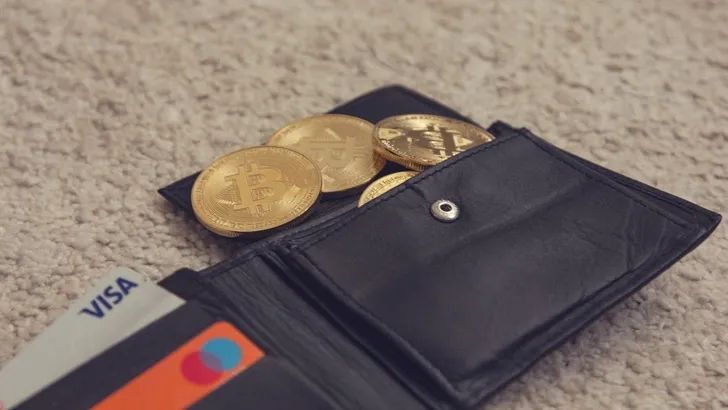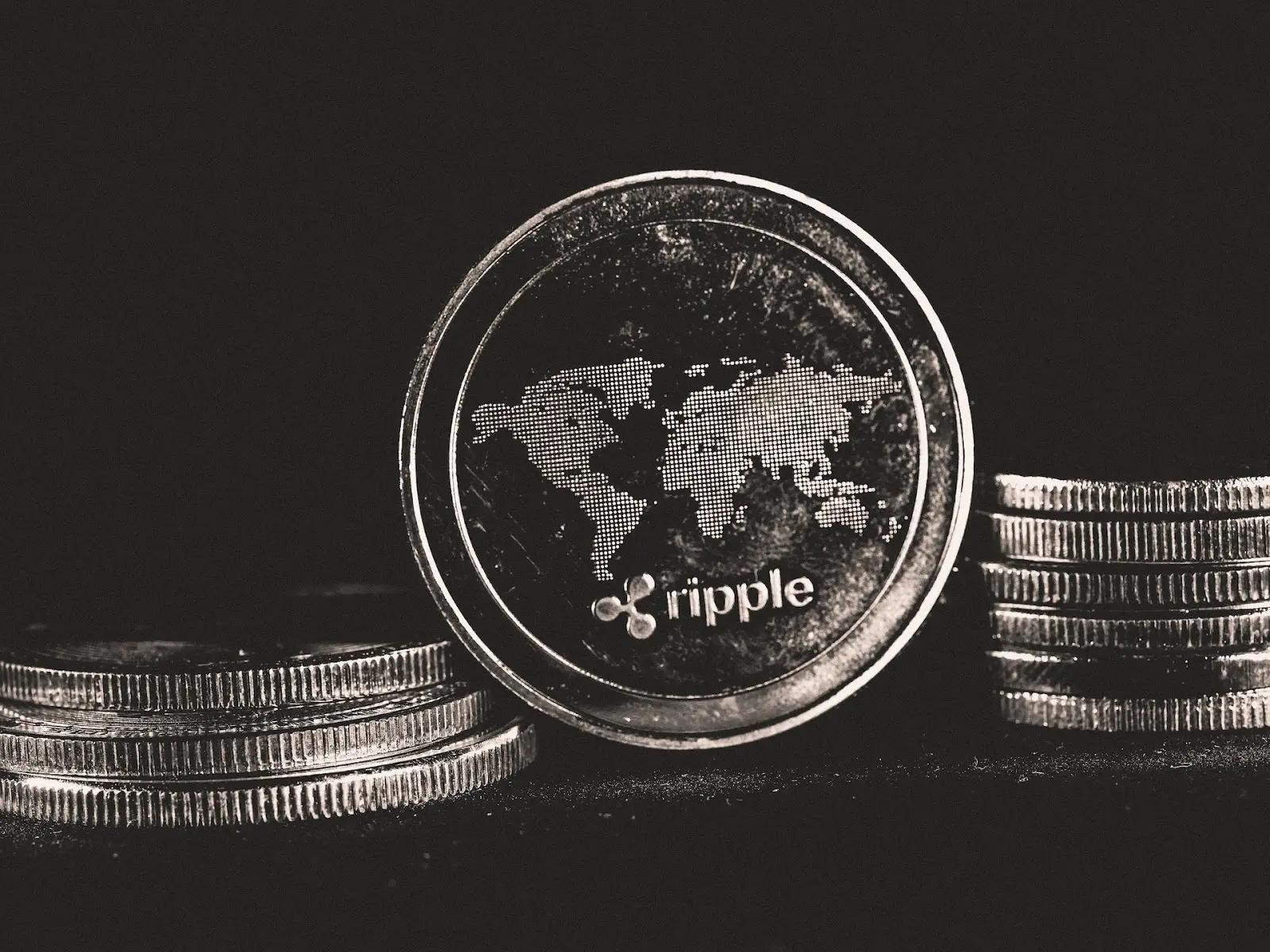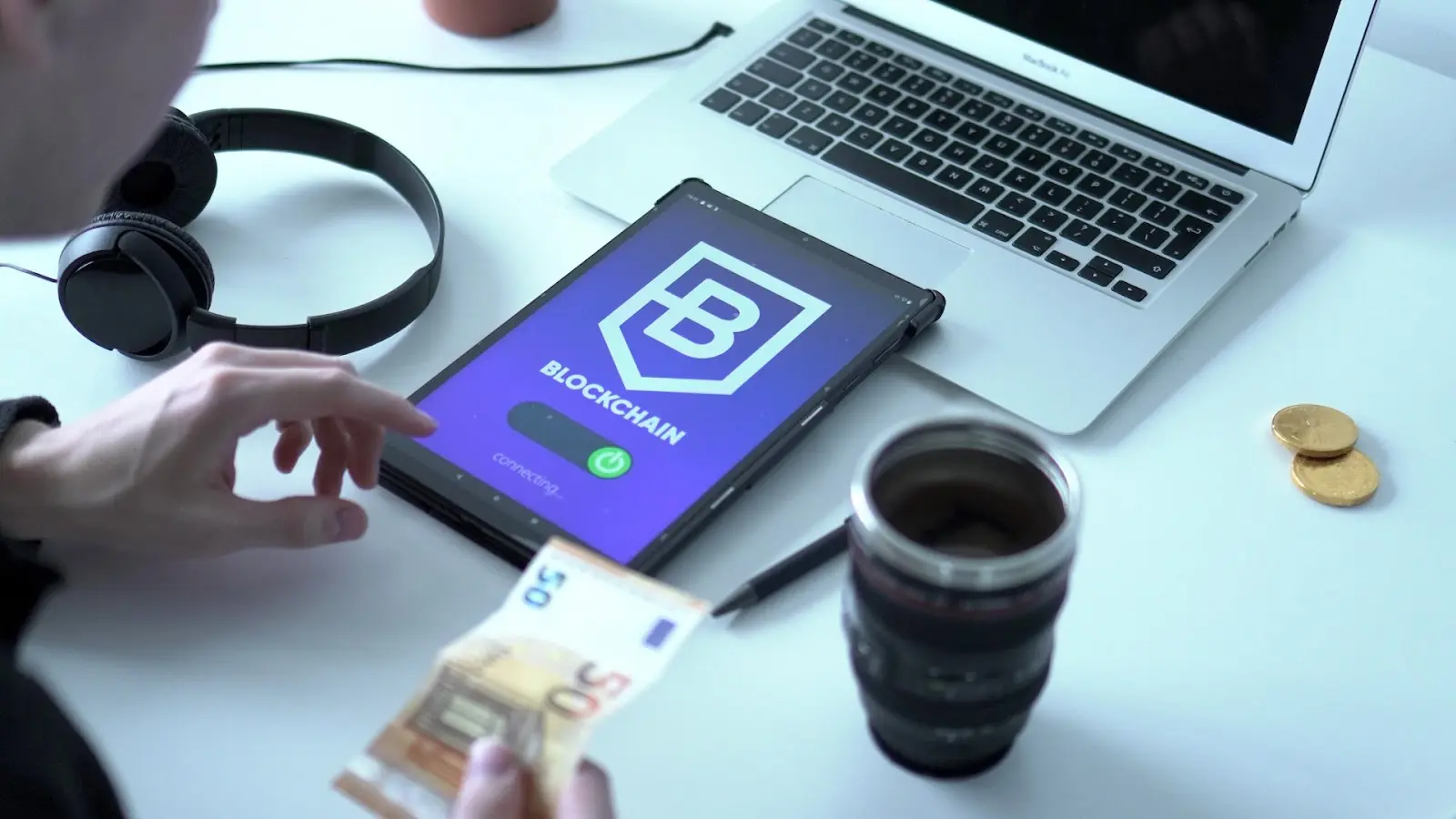7 Best Ripple Wallets to Store & Trade Your XRP

crypto wallets
Ripple (XRP) is one of the most interesting cryptocurrencies—the company’s history predates Bitcoin, and they’ve had a bumpy ride in recent years. Nevertheless, it is still topping the charts, which leaves many people wondering if they should invest in it and what the best Ripple wallets are.
The cryptosphere is a complex territory to navigate, even without going into the specifics of what makes Ripple a favored choice by many enthusiasts. That’s why we’ve created a comprehensive guide that will explain everything you need to know about investing in and storing XRP.
You’ll learn what exactly Ripple's cryptocurrency is, what the best wallets are for it, and how to get the most out of them. Without further ado, let’s get started!
What is XRP Cryptocurrency?

XRP is a digital asset developed by a fintech company called Ripple. It’s meant to be a faster and more efficient alternative to Bitcoin, with the purpose of facilitating global transactions.
The story of Ripple and XRP begins in 2004, several years before Satoshi Nakamoto published their whitepaper, ushering in a new era of cryptocurrencies. The company started off as RipplePay before being rebranded into Ripple in 2012.
While many use the terms XRP and Ripple interchangeably, these are two separate entities. Today, XRP refers to a native token on the blockchain called XRP Ledger (XRPL), developed by a company called Ripple Labs.
The XRP Ledger was launched in 2012 with a total supply of 100 billion tokens, all of which were pre-mined. 80 billion tokens were allocated to Ripple, with 55 billion being locked up to ensure a steady supply of XRP. The rest was shared among the Ripple team.
This distribution approach, coupled with the company’s goals and actions, has led to several lawsuits over the years. Regardless, XRP remains among the top 10 cryptocurrencies by market cap. The cryptocurrency’s functionality, combined with its deflationary aspect (XRP tokens are burned to facilitate transactions), makes it an enticing investment option.
As a result, XRP remains a highly sought-after crypto asset with a lot of price growth potential, which makes it important to know what the best Ripple wallets are. Keep reading as we explore some good wallet options and learn what to look for before deciding which one to use and how to use Ripple wallets to maximize their potential.
7 Best Ripple Wallets to Use
Now that we have a general understanding of what XRP is and why it’s important, let’s look into some of the wallet options.
#1. Coinbase
Coinbase is one of the oldest crypto exchanges in the market, having been founded in 2013. It’s the biggest CEX in the US, and it’s the only cryptocurrency exchange that’s listed on the New York Stock Exchange. As far as safe and reputable centralized exchanges go, Coinbase is at the top of the list.
Coinbase allows you to buy, hold, and sell XRP using its official website or its iOS and Android apps. However, taking into account its dedication to safety and regulation, you’ll have to perform extensive KYC checks before being able to fully utilize all the features that this exchange offers.
Coinbase also offers a dedicated software wallet called Coinbase Wallet.
#2. Coinbase Wallet
Coinbase Wallet is a software wallet for your desktop computer or mobile device. Despite the fact that Coinbase made it, you don't need an account with an exchange to use the wallet.
On top of being a wallet from a reputable company in the world of crypto, another upside to Coinbase Wallet is that it’s a self-custody wallet. The private keys to your XRP tokens are stored on your device, not with Coinbase.com.
So, while Coinbase Wallet is still a hot wallet, it offers a higher degree of security than if you were to store your XRP on an exchange. Additionally, Coinbase Wallet provides support for hundreds of thousands of cryptocurrencies, dApps, and NFTs and gives you access to the decentralized web.
#3. Binance
While Binance was founded several years after Coinbase—in 2017—it’s currently the world's largest centralized cryptocurrency exchange. Its efforts to become one of the most regulated exchanges and provide its users with unprecedented levels of security and features resulted in tenfold revenue growth within a couple of years.
Binance offers a plethora of trading and earning features you can use to maximize the potential of your XRP holdings. The exchange also prides itself on having the lowest transaction fees among the major trading platforms, which are 0.1%. However, remember that you’ll have to complete the Binance KYC verification before accessing most of these features.
#4. Trezor
If you want to secure your XRP assets with a hardware wallet, one of the Trezor products is a solid pick. Trezor wallets offer a cold storage solution that keeps your assets offline, and it’s one of the safest ways to hold your Ripple tokens for the long term.
These wallets allow you to send and receive funds and participate in the market by buying, selling, or swapping your tokens.
Trezor Model One is the company’s more affordable, entry-level option that still supports more than a thousand coins and tokens.
Trezor Model T is a premium option that comes with an LCD touchscreen for increased utility, support for even more coins and tokens, anonymity features, and more.
#5. eToro
eToro is a multi-asset brokerage company that was founded in 2007 and initially designed as an FX trading platform. In the following years, it evolved into an investment platform. With the expansion of cryptocurrencies in 2013, eToro expanded its offering to include coins such as BTC, XRP, LTC, and many others.
eToro is a great choice for individuals who want to invest in multiple assets besides XRP and cryptocurrencies. In addition to holding your Ripple tokens on the platform, you can also manage and trade them. To help with that, the website offers various charts, analyses, news, and stats. Plus, they have a mobile app with the same features as the website.
#6. Coinomi
Coinomi offers the perfect balance of safety and utility in the form of a software wallet. You can get it for Android, iOS, Windows, MacOS, and Linux.
Coinomi was founded in 2014, which makes it the first multi-chain wallet. Furthermore, the wallet has never been hacked, so it’s considered one of the safest software storage options for your XRP holdings.
The long list of features that Coinomi offers includes:
- Support for a broad range of cryptocurrencies from more than 125 blockchains
- Unprecedented level of versatility with hundreds of fiat currency representations
- Year-round, 24/7 customer support
- Support for Web3 and dApps
- Zero transaction fees when sending and receiving crypto, apart from miner fees
- Support for 25 languages, with more coming soon
All of that makes Coinomi the perfect wallet if you want your assets off an exchange but don’t want to manage hardware wallets.
#7. XRP Paper Wallet
Paper wallets are the DIY wallets of the crypto space. They consist of a public address and a private key, which you can simply write down on a piece of paper before storing it somewhere safe. As a result, there’s no need for modern hardware or complex software to secure your Ripple assets.
The public address is used to deposit and verify your holdings, while the private key is used to authorize transactions. Keep in mind that losing your private key or showing it to someone can result in a complete loss of funds.
You can use websites like XRPPaperWallet.com to generate your wallet in seconds. The website will even give you QR codes that match your public address and private key to make transacting easier.
However, it’s worth noting that while a piece of paper can’t be hacked, the website you use to create your private key can. Therefore, properly setting up a paper wallet usually requires an air-gapped device and plenty of precautionary measures, which is why this wallet is not recommended for entry-level users.
Why Should You Get an XRP Wallet?

The functionality of XRP Ripple wallets extends beyond merely storing crypto assets. Let’s explore the additional perks that you get by depositing your XRP in a good wallet.
#1. To Trade XRP Tokens
One of the biggest advantages of having your XRP in a feature-packed Ripple wallet is being able to trade it. Trading cryptocurrencies is a risky endeavor, but it can be highly lucrative if you know what you’re doing.
The simplest way to trade your XRP tokens is to keep them on an exchange. Centralized exchanges like Binance or Coinbase offer various XRP pairs, including:
- XRP/USDT
- XRP/BUSD
- XRP/BTC
- XRP/ETH
- XRP/EUR
- XRP/GBP
- XRP/BNB
XRP’s 24-hour trading volume often measures in the billions of dollars, with hundreds of exchanges and even more trading pairs to consider. You can participate in the spot market, trade margins or futures, buy XRP with credit cards, and more.
You can also trade XRP tokens using your hardware wallet, such as Ledger Nano S. While the process is a bit more complicated and requires connecting your wallet to an exchange, it’s much safer than keeping your assets on the exchange itself.
#2. To Stake XRP Tokens
XRP’s blockchain doesn’t operate on a proof-of-stake mechanism. As a result, it’s impossible to stake XRP natively. However, there are several ways to indirectly earn staking rewards with your XRP on various platforms.
Binance, for example, gives its users the option of flexible XRP staking with a 1.4% yield. You can also opt for auto-compounding to keep reinvesting the tokens you win by staking. The process is simple to set up, and you can use their calculator to figure out estimated earnings based on the staking period.
You can get similar options from other platforms, such as ReHold, Nexo, ByBit, BitTrue, and many others. Each option comes with different yield percentages, locking periods, and requirements, so it’s important to do research to find the one that suits your needs.
#3. To Earn XRP Rewards
There are many other ways to earn XRP rewards by keeping your tokens in a good wallet. For instance, you can set up automated XRP trading and have a bot or a platform trade for you 24/7.
Another way to earn XRP rewards is through lending. In essence, you’ll be giving your tokens to borrowers who will eventually return them with interest.
While this process can be lucrative, it’s worth noting that it’s not without risk. For instance, Celsius Network, a popular lending platform, ended up in the middle of a huge scandal after suddenly filing for bankruptcy in 2022.
Types of XRP Wallets
If you’re not sure which of the Ripple wallets is best for you, you can start by figuring out the best type—after that, it’ll be easier to narrow down the choices.
#1. Hardware Wallets
Hardware wallets are considered thebest in terms of security. Compared to keeping your assets on an exchange, storing crypto on a hardware wallet is a bit more complicated. Plus, you lose the flexibility of being able to quickly sell or trade your XRP.
However, many hardware wallets come with specialized software. That way, you can easily manage your assets or connect to an exchange for trading. When disconnected, a hardware wallet will keep your XRP offline, making it almost impossible for hackers and malicious actors to access it.
#2. Paper Wallets
Just as its name suggests, a paper wallet is a piece of paper with your secret key written on it. When properly set up, it can be one of the best XRP cold wallets for long-term storage.
Paper wallets offer a similar degree of security as hardware wallets. By using them, you’re also keeping your assets offline and out of the reach of hackers and scammers. Moreover, they are also cheaper than hardware wallets—in fact, they are usually free.
However, there are several downsides to using paper wallets, which is why hardware wallets almost made them obsolete. First off, setting up a paper wallet requires a high level of technical knowledge. A single misstep during its creation and management can result in a loss of funds or a leaked seed phrase.
Furthermore, paper is prone to damage and can be lost or stolen. And once you lose your seed phrase or someone else sees it, you could lose access to all your XRP.
#3. Exchange Wallets
Exchange Ripple wallets, such as those on Binance and Coinbase, are hot custodial wallets. In essence, you are trusting a third party to protect your assets by holding the private keys to your XRP.
The main benefit of having your XRP on an exchange is flexibility. You can quickly and easily trade your XRP, sell it, buy more, lend it, start and stop flexible staking, and more.
However, as the main cryptocurrency saying goes, “Not your keys; not your crypto.” Exchanges are often targeted by hackers, and some have gone so far as to rug pull their users.
Because of this, you should never keep the majority of your XRP in an exchange wallet. Only use the amount that you actively trade with, and move the rest to a cold wallet.
#4. Desktop and Mobile Wallets
Desktop and mobile Ripple wallets represent a middle ground between hardware and exchange wallets, and they are generally considered more secure than the latter. Furthermore, they are usually cheaper and easier to use than hardware wallets.
These software wallets come in the form of programs, mobile apps, and browser extensions. However, while they are user-friendly, they are still hot wallets and, thus, less secure than hardware wallets.
What to Look for In a Ripple Wallet
One of the most important aspects to recognize when choosing the best Ripple wallet for your XRP is security, so you should check whether the wallet has some of the following features:
- Two-factor authentication (2FA) adds an important layer of security to your wallet or account.
- Backup and recovery are essential in case you lose your wallet or forget your seed phrase.
- Self-custody, which means you’re in full control of your private keys and crypto assets.
Another substantial element of a good Ripple wallet is the experience it offers its users. In that regard, you should consider some of the following wallet’s facets:
- Ease of use and whether it’s beginner-friendly or requires technical knowledge
- Compatibility with other devices and exchanges
- Customer support that can assist you in case you have any questions or issues
There’s also the cost. If you hold a small amount of XRP, it might not be necessary to spend money on a hardware wallet, which can end up costing more than your assets. In that case, you’ll likely be better off with one of the numerous free options.
It’s important to take into account any fees associated with transactions and services that some wallets offer. While they might look insignificant at first, they add up over time.
Before deciding on a specific wallet, you should also look into the reputation and credibility of the company behind it. If they’ve been in the market for a long time and have a large community trusting them, they are likely a solid choice. It’s even better if the wallet’s code is open-source and available for anyone to check its security features and trustworthiness.
How to Use an XRP Ripple Wallet
How you should use your XRP wallet will depend on the specific wallet that you choose. For instance, if you want to use an exchange wallet, you should follow the guidelines of a specific exchange to create an account and start using their wallet.
The procedure generally comes down to a few simple steps, such as:
- Creating an account using your email and password
- Performing a KYC to unlock all the features
- Buying XRP with fiat or transferring it to the exchange’s Ripple wallet address
- Holding your assets, trading them, transferring them, or using any of the exchange’s numerous features
If you buy a hardware wallet for your XRP cryptocurrency, you should carefully read the guidelines when setting up your device. Most companies offer comprehensive sets of instructions on how to get the most out of their hardware wallets. Many of them have complementary software to ease the process, and you can always contact customer support.
Mobile or desktop wallets often work similarly to the usual software and applications you use on these devices. For instance, when setting up a mobile wallet, you’ll encounter a process similar to the following one:
- Visit the App Store or Google Play Store
- Download and install a desired mobile wallet
- Write down the recovery phrase and set up a password
- Find your XRP address and use it to receive tokens
- (Optional) Use the wallet’s features to trade, transfer, lend, stake, or do more with your assets
Key Takeaways
Choosing the right Ripple wallet is an important step for anyone looking to invest in XRP. You should carefully consider the crucial factors, such as the wallet’s security, functionality, user experience, and customer service, before transferring your funds to it.
By taking the time to find a good option before obtaining XRP, you’ll ensure the safety and longevity of your investment. Remember that there’s no one-size-fits-all solution—the best wallet is one tailored to your needs.
So, do your due diligence, check out the reviews, and maybe even consult a professional. Best of luck, and may your XRP soar to the moon!